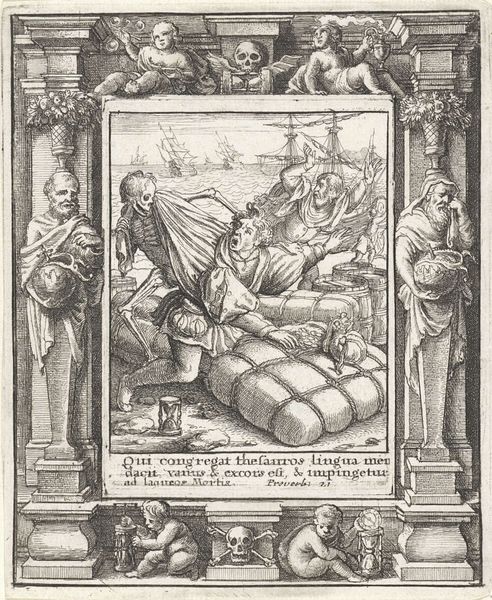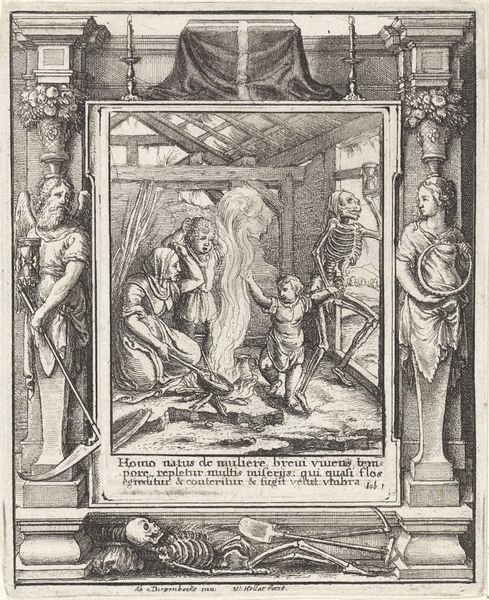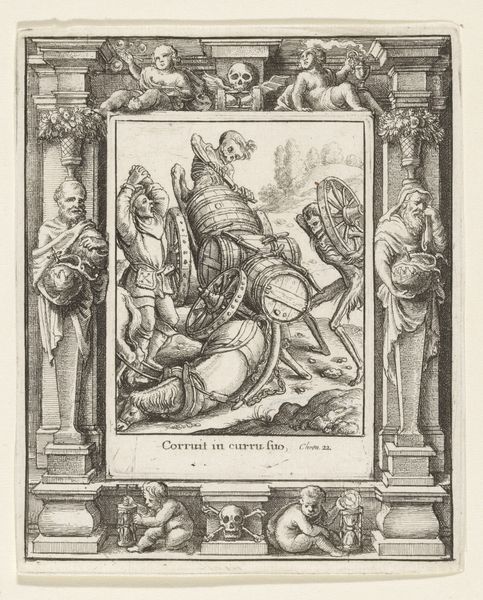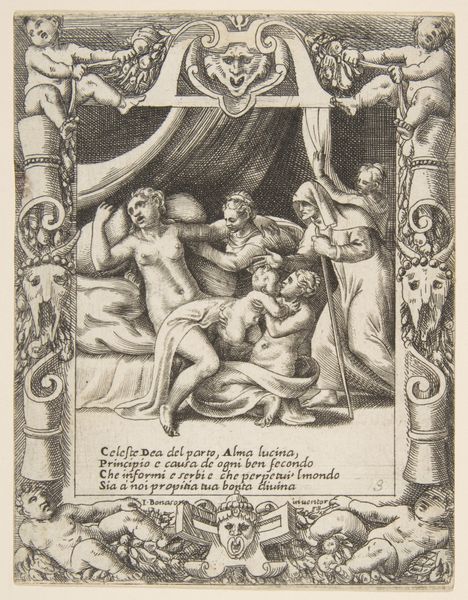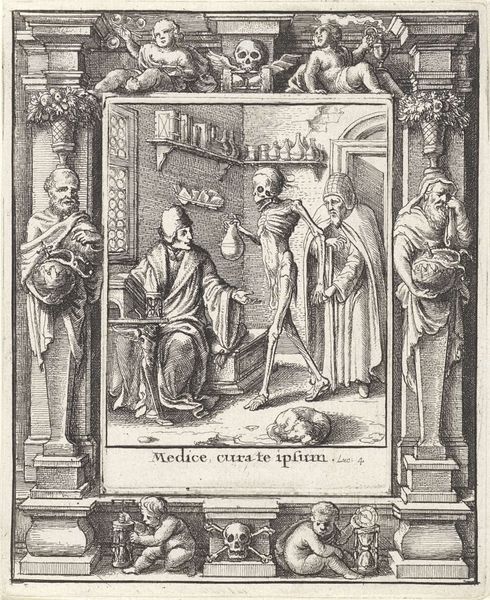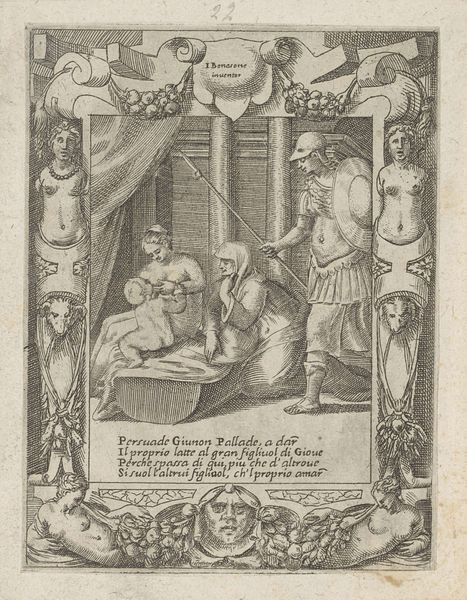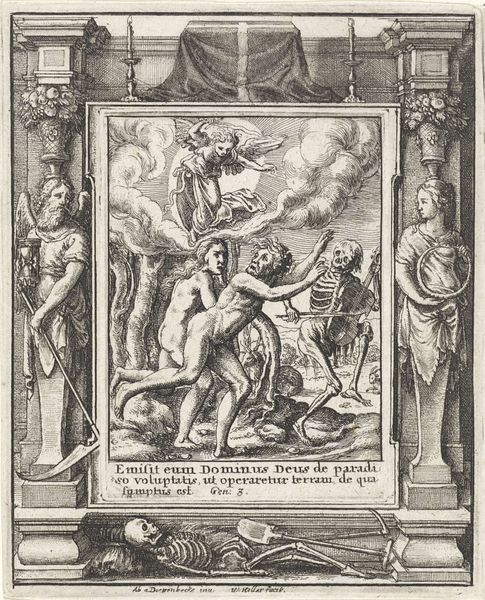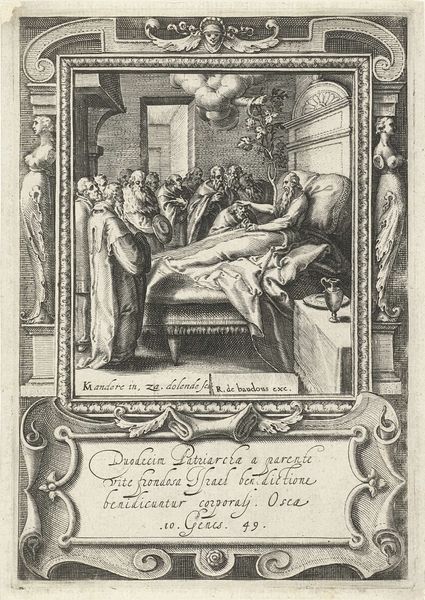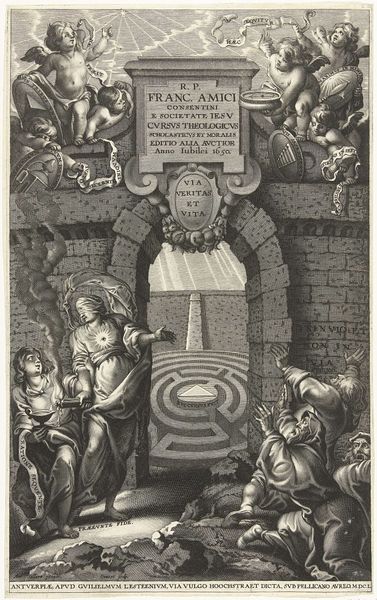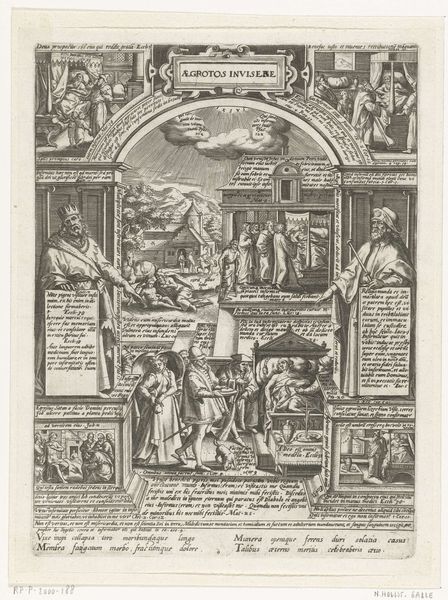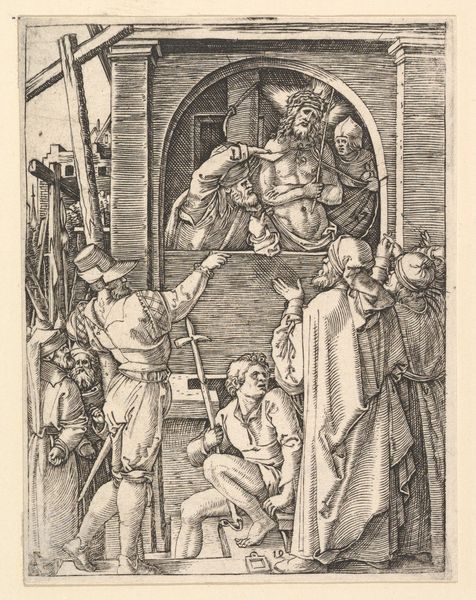
print, etching
#
allegory
#
baroque
# print
#
etching
#
momento-mori
#
genre-painting
Dimensions: height 115 mm, width 95 mm, height 77 mm, width 55 mm
Copyright: Rijks Museum: Open Domain
This print, "The Rich Man and Death," was made by Wenceslaus Hollar in the 17th century, using the exacting technique of etching. Look closely, and you’ll see how Hollar used fine lines to create a highly detailed scene. This wasn't a quick process. The artist would have covered a copper plate with wax, then scratched the design into the wax with a needle, exposed the plate to acid, and finally, printed the image. The material’s influence is clear: the precise lines give the image its sharp, clear quality. Notice the contrast between light and shadow, achieved by varying the density and direction of the etched lines. This process allowed Hollar to capture a wealth of detail, from the rich man's fine garments to the skeletal figure of Death. The print's significance lies in its social commentary. It reflects on the fleeting nature of wealth, and reminds us of our mortality. The image suggests a world where earthly possessions are meaningless in the face of death, challenging the viewer to consider the value of their own labor and consumption. Hollar’s skilled engagement with the etching process imbues the print with a message that transcends the boundaries between craft and fine art.
Comments
No comments
Be the first to comment and join the conversation on the ultimate creative platform.
